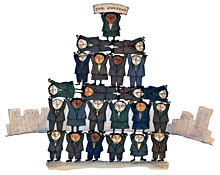Ignacio Sánchez Galán is not excited by the possibility that EDF, a French energy company, and ACS, a Spanish construction firm, will make a takeover offer for Iberdrola, the Spanish electricity provider. Galán says he does not want his company to split up because “there is no shortage of intermediaries who could sell the company piece by piece.” Meanwhile, Iberdrola has just unveiled an organizational chart that creates a dual executive who has responsibility over both branches of the tree. This differs from the traditional separation between the managers of the business and the corporate board of directors.

Sign up to stay informed about our latest article releases.